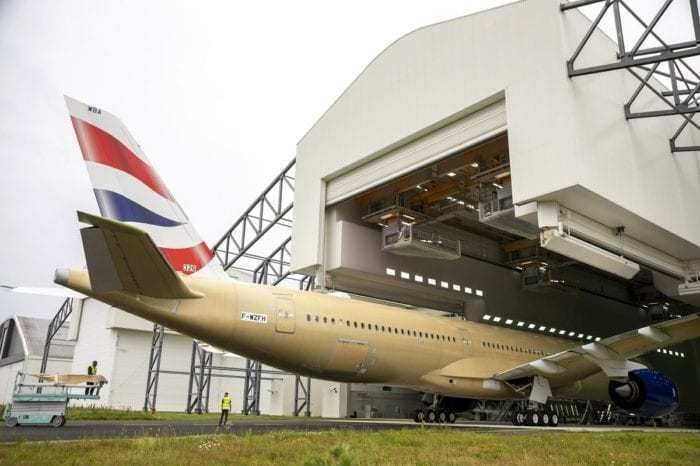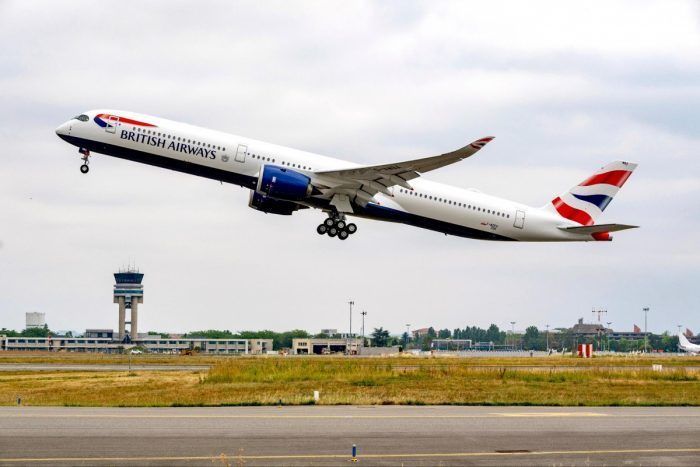On 12 February, a British Airways A350-1000 suffered a hydraulic failure while landing at Toronto Pearson International Airport (YYZ). Flight BA93 from London Heathrow Airport (LHR) was on final approach into Toronto when the crew reported a hydraulic system failure.
The new state-of-the-art aircraft continued with its landing procedure. It was able to make a safe landing on Toronto’s runway 23, with emergency services standing by as a precaution.
When the aircraft taxied off the runway and came to a stop, the brakes were found to be extremely hot and there was hydraulic fluid leaking from the plane. Rather than allowing the British Airways jet registration number G-XWBD to proceed to the gate under its own power, it was towed to the terminal.
Delayed luggage delivery
Due to the hydraulic fault, passengers were unable to get their luggage until the following day, as the cargo hatch could not be opened. Unlike Boeing, which uses electric motors for its cargo door, Airbus relies on hydraulics. However, there is a backup lever that allows the ground crew to pump fluid into the aircraft by hand. In this case, it sounds as though they wanted to first fix the leak before worrying about the luggage.
The aircraft remained on the ground in Canada for around 42 hours while the system was repaired before returning to the United Kingdom.
Third incident for G-XWBD
Not that I am suspicious or anything, but you can’t help get the feeling that this aircraft might in some way be cursed.
Before it was ever delivered to British Airways in December of 2019, this fourth British Airways A350 in an order of 18 was damaged while in the Toulouse paint shop. While no one has said exactly what occurred, rumors suggest that scaffolding used to help painters reach certain parts of the aircraft damaged the horizontal stabilizer.
Then, while operating as flight number BA163 on Sunday, the 19th of January, 2020 between London Heathrow Airport and Ben Gurion Airport (TLV) in Tel Aviv, Israel, the aircraft suffered a hard landing. Already two hours late leaving London for the Middle East the flight landed in such a way that British Airways decided to cancel the return leg back to London. No specifics were made about the hard landing, but aviation website FlightGlobal quotes British Airways with saying:
“After our aircraft experienced a hard landing into Tel Aviv, our highly-skilled engineers checked over the aircraft and it has since been flown back to Heathrow.”
Could hydraulics have been a factor in the hard landing?
Weather data at the time of the incident suggests that other than a variable 11-knot wind, conditions were not a factor in the hard landing.
While I am no expert when it comes to how the hydraulics operates the landing gear, I would feel safe to speculate that it may have had something to do with the hard landing.
Interestingly, one of the comments on the Aviation Herald's report of the incident says they hope that “G-XWBD isn’t turning into the VH-OQA of the BA fleet.” VH-OQA refers to a Qantas A380 that suffered an engine failure and subsequent emergency landing in Singapore.
What do you think? Does G-XWBD have a serious problem with its hydraulics? Please let us know in the comments.



